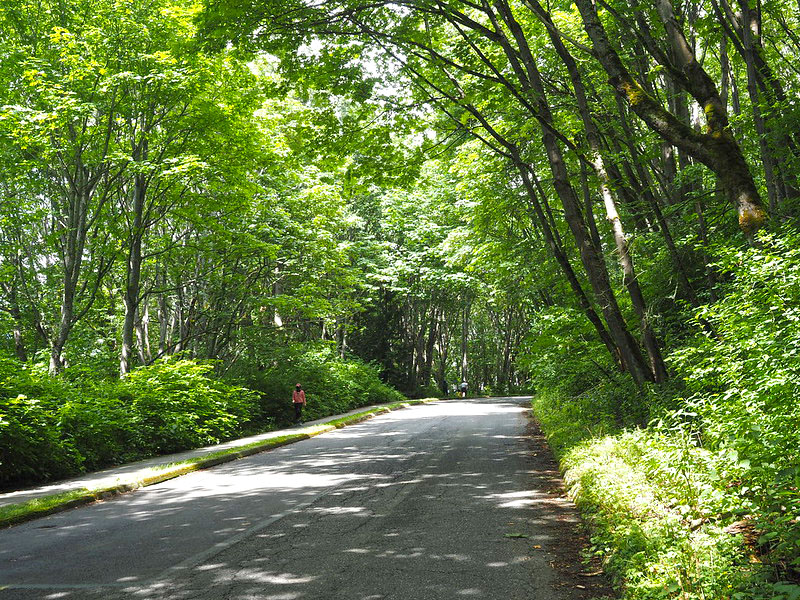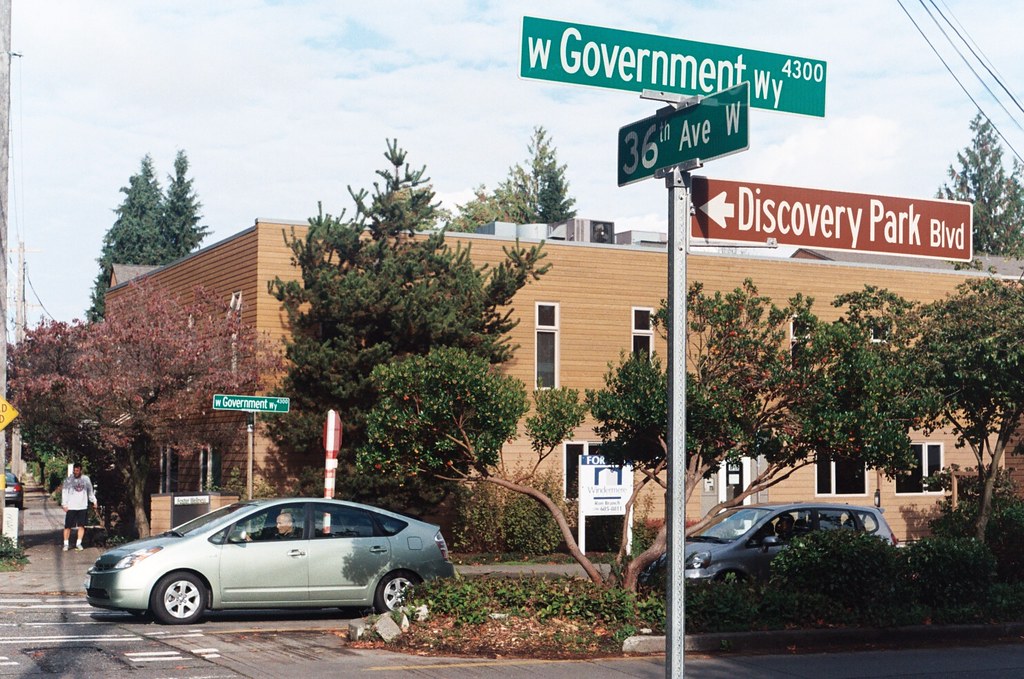Unlike Seattle’s other park boulevards, Discovery Park Boulevard is of recent creation. Ordinance 122503, passed in 2007, designated numerous streets within the park as park boulevards, one reason being that:
Public safety will be enhanced within Discovery Park as traffic codes and regulations are fully enforceable on Park Boulevards as they are on City of Seattle streets, but not necessarily on park roads which are considered “private.”
(More on this at Lawtonwood Road.) Among the streets so designated were Lawtonwood Road, Bay Terrace Road, Utah Street, Washington Avenue, California Avenue, Iowa Street, Illinois Avenue, Texas Way, Idaho Avenue, and 45th Avenue W. The ordinance specified that Washington Avenue from the park entrance to Illinois Avenue; Illinois Avenue from there to Utah Street; and Utah Street from there to King County’s West Point Treatment Plant were to be known as Discovery Park Boulevard (see this map for an illustration).

The park itself, 534 acres in the northwest corner of the Magnolia neighborhood, is the largest in Seattle. Opened in 1973, it occupies most of what was once Fort Lawton (1900–2011). It is said to have been named for HMS Discovery, Captain George Vancouver’s ship during the expedition that explored (and named) Puget Sound in 1792. However, according to “Discovery Park: A People’s Park in Magnolia,” a chapter from Magnolia: Memories & Milestones (2000),
The person who first suggested the name “Discovery Park” was U.S. District Judge Donald S. Voorhees, who had led the effort to create a park at Fort Lawton in 1968…. Voorhees was a student of Puget Sound history and Vancouver’s exploration. But he was also an avid follower of the philosophy of Frederick Law Olmsted, the famed American landscape architect. Voorhees believed the name combined the history of Vancouver’s exploration of Puget Sound on the HMS Discovery with the excitement of visitors when they discover the wonders of nature in the Park. When asked to make a choice between the meanings, Voorhees would choose the experience of “discovery” by citizens, particularly children, visiting the Park for the first time, over the historical connection with the HMS Discovery.

Born and raised in Seattle, Benjamin Donguk Lukoff had his interest in local history kindled at the age of six, when his father bought him settler granddaughter Sophie Frye Bass’s Pig-Tail Days in Old Seattle at the gift shop of the Museum of History and Industry. He studied English, Russian, and linguistics at the University of Washington, and went on to earn his master’s in English linguistics from University College London. His book of rephotography, Seattle Then and Now, was published in 2010. An updated version came out in 2015.